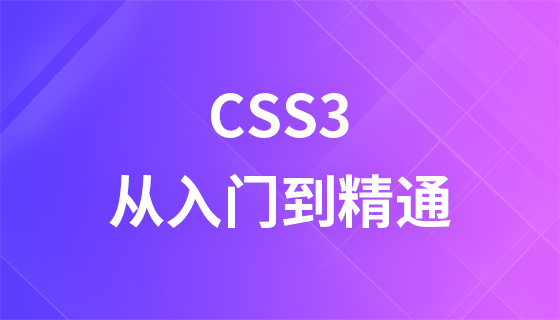HTML5 inline SVG
HTML5 Inline SVG
What is SVG?
SVG stands for Scalable Vector Graphics
SVG is used to define vector-based graphics for the web
SVG uses XML Format definition graphics
SVG The graphic quality of the image will not be lost when it is enlarged or changed in size
SVG is a standard of the World Wide Web Consortium
With the help of SVG, we can achieve Many drawing operations are the same as the Canvas API type, but when drawing text on a Canvas element, the characters will be fixed to it in pixels. The text becomes part of the image, and the text content cannot be changed unless the Canvas drawing area is redrawn. Because of this, text on Canvas cannot be retrieved by search engines, but text on SVG is searchable. For example, Google indexes text from SVG content on the web.
SVG Advantages
Compared with other image formats (such as JPEG and GIF), the advantages of using SVG are:
SVG images can be created and modified with a text editor
SVG images can be searched, indexed, scripted, or compressed
SVGs are scalable
SVG images can Print with high quality at any resolution
SVG can be enlarged without losing image quality
Add SVG to the page
Inline mode: Used like other elements in HTML. On this basis, interactive applications of HTML, JavaScript and SVG can be written.
<body> <svg width="200" height="200"> </svg> </body>
External link method: Import external SVG files in HTML through the <img> element. The disadvantage is that you cannot write scripts that interact with SVG elements.
<img src="example.svg" />
Simple shapes
SVG contains basic shape elements , such as rectangle, circle and ellipse. The size and position of shape elements are defined as properties. The properties of a rectangle are width and height. Circles have an r attribute that represents the radius. They all use CSS syntax to express distance, so the units include px, point, em, etc.
Rectangle: x="50" y="20" means the starting point of the rectangle is (50,20)
<body> <svg width="200" height="200"> <rect x="50" y="20" width="100" height="80" stroke="red" fill="#ccc"></rect> </svg> </body>
SVG draws switch objects in the order they appear in the object document. If we draw the circle after drawing the rectangle, the circle will appear on top of the rectangle.
Add a circle:
<body> <svg width="200" height="200"> <rect x="50" y="20" width="100" height="80" stroke="red" fill="#ccc"> </rect> <circle cx="120" cy="80" r="40" stroke="#00f" fill="none" stroke-width="8"></circle> </svg> </body>
Transform SVG element
Multiple elements can be combined in SVG to form a group and become a whole.
<g>The element represents a "group" and can be used to combine multiple related elements. Group members can be referenced by ID. In addition, the group can also be transformed as a whole. If you add a transform attribute to a group, all content in the group will be transformed. Transform properties include rotation, deformation, scaling, and beveling.
<svg width="200" height="200"> <g transform="translate(60,0) rotate(30) scale(0.75)" id="ShapeGroup"> <rect x="50" y="20" width="100" height="80" stroke="red" fill="#ccc"></rect> <circle cx="120" cy="80" r="40" stroke="#00f" fill="none" stroke-width="8"></circle> </g> </svg>
Reuse content
The <defs> element in SVG is used to define content for future use. You can use the <use> element to link the content defined by <defs> to the place where it needs to be displayed. With these two elements, you can reuse the same content multiple times and eliminate redundancy.
<svg width="200" height="200"> <defs> <g id="ShapeGroup"> <rect x="50" y="20" width="100" height="80" stroke="red" fill="#ccc"></rect> <circle cx="120" cy="80" r="40" stroke="#00f" fill="none" stroke-width="8"></circle> </g> </defs> <use xlink:href="#ShapeGroup" transform="translate(60,0) scale(0.4)"></use> <use xlink:href="#ShapeGroup" transform="translate(120,80) scale(0.75)"></use> <use xlink:href="#ShapeGroup" transform="translate(20,60) scale(0.25)"></use> </svg>
Patterns and gradients
<svg> <defs> <pattern id="GravelPattern" patternContentUnits="userSpaceOnUse" x="0" y="0" width="100" height="67" viewBox="0 0 100 67"> <image x="0" y="0" width="100" height="67" xlink:href="gravel.jpg" /> </pattern> <%--渐变--%> <linearGradient id="RedBlackGradient"> <stop offset="0%" stop-color="#000"></stop> <stop offset="100%" stop-color="#f00"></stop> </linearGradient> </defs> <rect x="0" y="20" width="100" height="80" stroke="red" fill="url(#RedBlackGradient)" /> <circle cx="120" cy="80" r="40" stroke="#00f" stroke-width="8" fill="url(#GravelPattern)" /> </svg>
Path
##<path> tag is used to define path. <path> tag <path> tag is used to define the path. The following commands can be used for path data: M = movetoL = lineto#H = horizontal linetoV = vertical linetoC = curvetoS = smooth curvetoQ = quadratic Belzier curveT = smooth quadratic Belzier curveto A = elliptical ArcZ = closepath Note: All of the above commands allow lowercase letters. Uppercase means absolute positioning, lowercase means relative positioning. SVG contains simple shapes as well as free-form paths. The path element has a d attribute, which represents path data. In the value of d, M represents Move to, L represents Line to, Q represents a quadratic curve, and Z represents a closed path.<svg width="200" height="200"> <path d="M25,50 L10,80 L20,80 L5,110,L15,110,L20,80 Z" /> </svg>
Text
The text in SVG is somewhat similar to the definition of style in CSS<svg width="200" height="200"> <text x="10" y="80" font-family="Droid Sans" stroke="#00f" fill="#00f" font-size="40px" font-weight="bold">Hello SVG</text> </svg>
Both SVG and Canvas The difference between
SVG is a language that uses XML to describe 2D graphics. Canvas draws 2D graphics through JavaScript. SVG is based on XML, which means every element in the SVG DOM is available. You can attach a JavaScript event handler to an element. In SVG, each drawn graphic is considered an object. If the properties of an SVG object change, the browser can automatically reproduce the graphic. Canvas is rendered pixel by pixel. In canvas, once a graphic is drawn, it no longer gets the browser's attention. If its position changes, the entire scene needs to be redrawn, including any objects that may have been covered by graphics.














